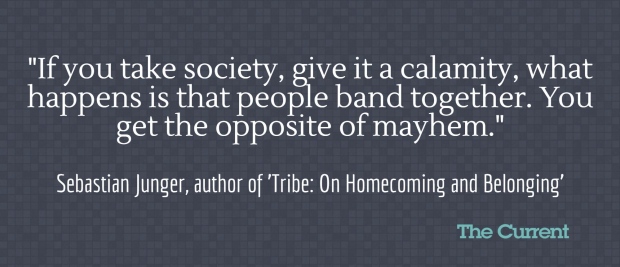|
Ever had the pleasure of being part of a team that comes together? In the summer of 2001, the infantry battalion I was in basically only had enough soldiers for 2 of the 3 line companies. As one of the newest Platoon Commanders, I was in charge of a fairly mixed up group in the third company, understrength and under-resourced. We were getting ready for an urban operations exercise, one of the first we conducted with MILES simulation gear and it promised to be challenging. At the start of the exercise, our platoon was pretty rough. But as the event wore on, a funny thing happened – the platoon started to come together. Looking back, I’m not even sure what the magic ingredient was, certainly nothing to do with me, but by the time of the so-called platoon confirmation attack, it was impressive. |
I remember stepping off for a hasty attack – exactly what it sounds like, an attack conducted with little preparation – and having all the sections and soldiers immediately fall into their positions. Added to that, we even changed the standard process on the fly, adding a small diversionary attack that allowed us to successfully gain lodgement in a building. It seemed like it had taken forever, but we were really working as a team.
With more experience, I can say that the only way something like that is possible is if the group becomes more than the sum of its parts, which is why the next leadership principle is about teamwork.
Build Teamwork and Cohesion
For the history lesson part of the blog, I believe this principle evolved from the earlier maxim to ‘Train your soldiers as a team and employ them up to their capabilities,’ although I have some doubt. For starters, there only used to be 10 Principles of Leadership and now there are 12. Of note, aside from training your soldiers as a team, teamwork itself wasn’t captured in the earlier version. This is just speculation, but my guess is that the earlier version was split to account for the difference between training aspect and developing teamwork and cohesion. I’m not going to elaborate on training as that was done last week, but let’s dive into teamwork and cohesion.
First of all, teamwork and cohesion go beyond the individuals who compose the team, and while these functions may be achieved through training, it would be a mistake to think that they are synonymous with training. In the military, teamwork is defined as the roles, structures, and routines that allow a team to function. In other words, teamwork can be taken to mean the coordination processes that enable individuals to work together.
Cohesion, on the other hand, is the bonding amongst team members, or the interpersonal relationships. More familiarly, this is known as esprit de corps, and it is formed through shared commitment and the valuation of the contribution of all involved.
Together, teamwork and cohesion are two of the mechanisms through which teams actually work together, which includes how they’re organized, procedures, and interpersonal relations. Pretty heady stuff, but how is it applicable to the business of writing? I think the answer to this lies in examining some of the ways through which teamwork and cohesion can be generated.
A Clear Purpose
This contributes to cohesion, or a sense of shared commitment. I tend to associate this with some of the contemporary discussion about tribes, or communities bound by some sort of strong tie like kinship or some other unifying idea. For example, Sebastian Junger has an excellent book out that explains this concept and Jeff Goins has a writer’s program predicated on a similar theme. Fad or legit, the identification of a clearly articulated goal, what we’ve called theme in previous blogs, is one way an author could identify like-minded individuals with whom they could develop a sense of shared purpose.
Engagement
There are a number of separate methods in the CAF leadership publication that I’m going to treat as a composite group since they all relate to engaging audiences. Participation, or the sharing of information, ideas, and knowledge, is one method, but it’s joined by others such as civilized disagreement, open communications, and active listening. Over time, additional methods come in such as sharing experiences and hardships. To me, this is all about outreach and the way in which it’s conducted.
So first, to form a sense of shared purpose with a group, a writer actually has to participate in some sort of dialogue – seems pretty straightforward. But on top of that, the way that dialogue happens is just as important. So whether interacting with readers, other writers, or team members such as beta readers, keeping respectful and actually hearing what other people have to say is important.
Respect
Another category I created to group similar methods, this includes setting a comfortable atmosphere, embracing diversity, letting team members express disagreement, and stifling rumours. All of those are fairly self-explanatory and again, reinforce that it’s not enough to engage with people; to build shared purpose it has to be a two way street where someone else’s opinion matters just as much as your own.
So taken together, there are a number of ways that teamwork and cohesion can be developed and they’re by no means restricted to a rigidly formed team; authors can certainly apply these methods to develop a community wherein they have influence. In gross terms, first, have an idea of what you’re all about, either the type of writer you are, or at least the type of writing you’re doing. Second, go out and engage people and last, make sure you do it respectfully.
The last consideration might be that establishing teamwork and cohesion, either how the military has defined it or how it might be applied as a writer, is going to take time. That shouldn’t be a shock; most anything worthwhile doing takes both time and effort. So while it may seem like that author platform just isn’t building up any steam, take heart – it may feel like it’s taking forever to come together, but when it does, it’ll be impressive.Next week, we’ll look at how the principle of Keeping Subordinates Informed can be applied to the business of writing.





